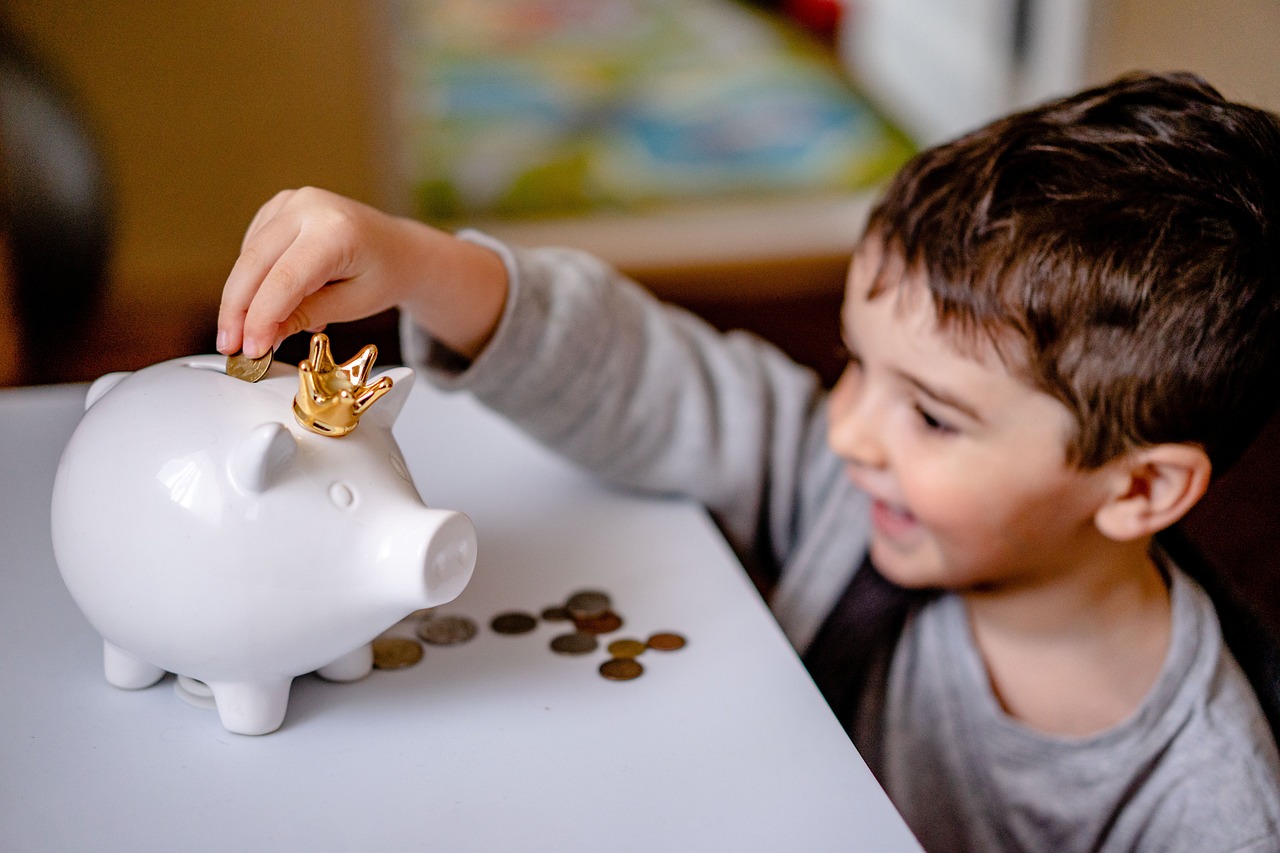Teaching kids about money is one of the most important lessons you can give them. Understanding how to manage money wisely is a skill that will serve them well throughout their lives. Whether it’s saving for something special, understanding the value of a dollar, or learning the basics of budgeting, financial education should start early. In this blog, we’ll explore simple and effective ways to teach your kids about money, so they can grow up to be financially responsible adults.
Why It’s Important to Teach Kids About Money
Money is a part of everyday life, but many people grow up without a solid understanding of how to manage it. Teaching your kids about money early on can help them develop good financial habits that will benefit them throughout their lives. Here are a few reasons why it’s important:
- Builds Financial Literacy: Kids who learn about money early are more likely to understand concepts like saving, spending, and investing when they’re older.
- Prepares Them for the Future: Whether they’re saving for a toy now or a car later, understanding money helps kids plan for their future needs and goals.
- Reduces Financial Stress: Kids who know how to manage money are less likely to experience financial stress as adults because they’ll be better equipped to handle their finances.
1. Start with the Basics: Understanding Money
The first step in teaching kids about money is helping them understand what money is and how it’s used. Even young children can grasp basic concepts like:
- What Money Is: Explain that money is something we use to buy things we need or want. You can use play money or real coins and bills to make it more tangible.
- Earning Money: Talk about how people earn money by working. You can explain that different jobs pay different amounts, and that money is earned in exchange for the work people do.
- Saving vs. Spending: Introduce the idea that money can be saved for later or spent now. This helps kids understand that they don’t have to spend all their money at once.
2. Give Them an Allowance
An allowance is a great way to teach kids about managing money. By giving your child a small amount of money regularly, you give them the opportunity to make decisions about how to use it. Here’s how to make an allowance a useful teaching tool:
- Set Clear Expectations: Decide how much allowance to give and how often. Make it clear what the allowance is for and whether it’s tied to chores or given as a regular amount.
- Teach Saving: Encourage your child to save a portion of their allowance each week. You can help them set a savings goal, like buying a toy or saving for a special outing.
- Discuss Spending: Let them decide how to spend their money, but talk about the consequences of their choices. For example, if they spend all their allowance at once, they won’t have any left for something else they might want.
3. Introduce the Concept of Budgeting
Budgeting is a key skill that helps people manage their money effectively. You can introduce budgeting to your kids in a simple way by helping them create a plan for their allowance or other money they receive.
- Break It Down: Help your child divide their money into different categories, like saving, spending, and giving. You can use jars or envelopes to physically separate the money into these categories.
- Set Goals: Talk about setting short-term and long-term financial goals. For example, a short-term goal might be saving for a new game, while a long-term goal could be saving for a bike.
- Track Their Progress: Help your child keep track of how much money they have in each category and how close they are to reaching their goals. This teaches them to be mindful of their spending and saving habits.
4. Use Everyday Activities as Teaching Moments
You don’t need to set aside special time to teach your kids about money—everyday activities offer plenty of opportunities for learning. Here are a few examples:
- Grocery Shopping: Take your child grocery shopping with you and talk about how much things cost. You can explain why you choose certain brands over others or how you use coupons to save money.
- Paying Bills: If appropriate, show your child how you pay bills and explain why it’s important to pay them on time. This can help them understand the concept of financial responsibility.
- Bank Visits: If you go to the bank, take your child with you. Explain how banks work, what a savings account is, and why people use banks to keep their money safe.
5. Teach the Value of Giving
Teaching your kids about money isn’t just about saving and spending—it’s also about giving. Helping others is an important value, and it’s something that can be taught from a young age.
- Set Aside Money for Charity: Encourage your child to set aside a portion of their allowance for charity or to help someone in need. This teaches them to think beyond their own wants and needs.
- Involve Them in Charitable Activities: Whether it’s donating to a food bank, participating in a fundraiser, or volunteering, involve your child in activities that help others. This reinforces the idea that money can be used to make a positive impact.
6. Make Learning About Money Fun
Learning about money doesn’t have to be boring! There are many fun ways to teach your kids about financial concepts.
- Play Money Games: Board games like Monopoly or The Game of Life introduce kids to concepts like earning, spending, and investing in a fun way.
- Use Apps and Online Tools: There are many apps and websites designed to teach kids about money through interactive games and activities. Find one that’s appropriate for your child’s age and interests.
- Create a Family Savings Challenge: Set a family savings goal, like saving for a vacation or a special outing, and involve your kids in the process. This can turn saving money into a team effort.
7. Lead by Example
Kids learn a lot by watching their parents, so one of the best ways to teach your kids about money is to lead by example. Show them how you budget, save, and make thoughtful spending decisions.
- Discuss Your Financial Decisions: When making a purchase, talk to your child about why you’re buying something and how it fits into your budget.
- Show Them Your Savings Habits: If you’re saving for a big purchase or a vacation, explain how you’re putting money aside each month to reach your goal.
- Be Honest About Financial Mistakes: If you make a financial mistake, don’t be afraid to discuss it with your child. This can be a valuable lesson in learning from mistakes and making better choices in the future.
Conclusion
Teaching your kids about money is one of the most valuable lessons you can give them. By starting early and using simple, everyday activities to reinforce financial concepts, you can help your children develop the skills and habits they need to manage money wisely. Whether it’s understanding the basics of saving and spending, learning to budget, or appreciating the value of giving, these lessons will set the foundation for a lifetime of financial responsibility. Remember, the goal is to make learning about money fun and engaging, so your kids will be excited to put their new skills into practice.




